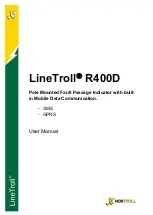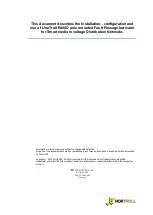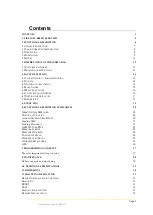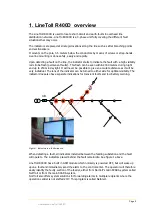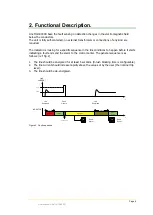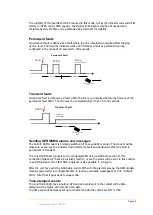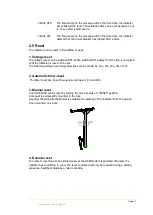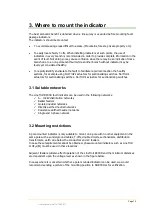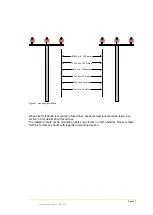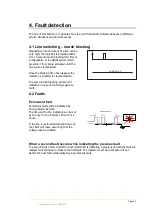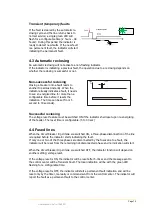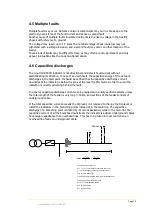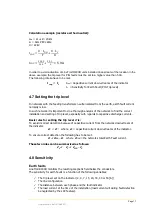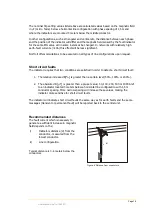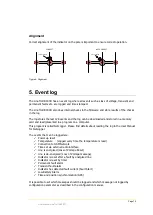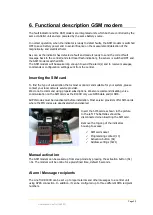
Page 5
User Manual LineTroll R400D
1. LineToll R400D overview
The LineTroll R400D is used to locate short-circuit and earth faults in overhead line
distribution networks. LineTroll R400D is a 3-phase unit fully covering the different fault
situations that may occur.
The indicators are placed at strategic locations along the line such as after branching points
and sectionalisers.
It mounts on the pole, 3-5 meters below the conductors by means of screws or strap-bands.
Live line mounting is done safely, easily and rapidly.
Upon detecting a fault on the line, the indicator starts to indicate the fault with a high visibility
red strobe flash (permanent faults). This flash can be seen within 2000 meters during night
and up to 250m in daylight. It will never be possible to give an accurate distance as it will be
very individual. The lens of the indicator can be turned to either side for optimal visibility. The
indicator does also have separate indications for transient faults and low battery warning.
Figure 1, Indicators in a fault situation
When detecting a fault, all indicators installed between the feeding substation and the fault
will operate. The indicators placed behind the fault remain idle. See figure 1 above.
LineTroll R400D has a built in GSM module which normally is powered OFF, but will wake up
upon a fault and immediately send the alarm to the control center. The operator will therefore
easily identify the faulty section of the feeder, either from Nortroll’s microSC
ADA system called
NetTroll or from the main SCADA system.
NorTroll also offers system solutions for forwarding alarms to multiple recipients where the
operation central is not staffed 24/7. This program is called NetAlert.
C.B.

